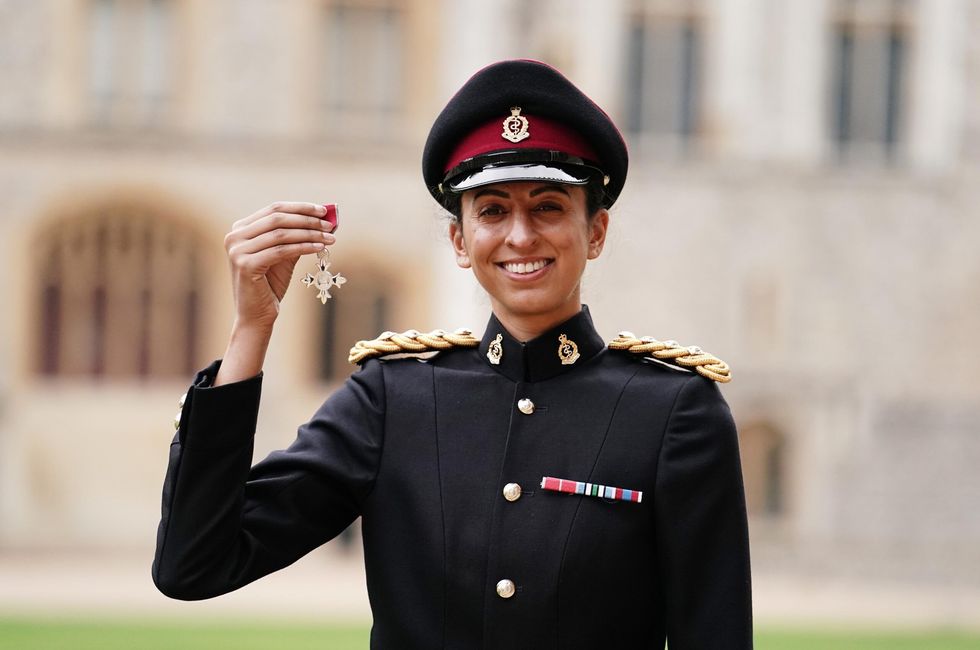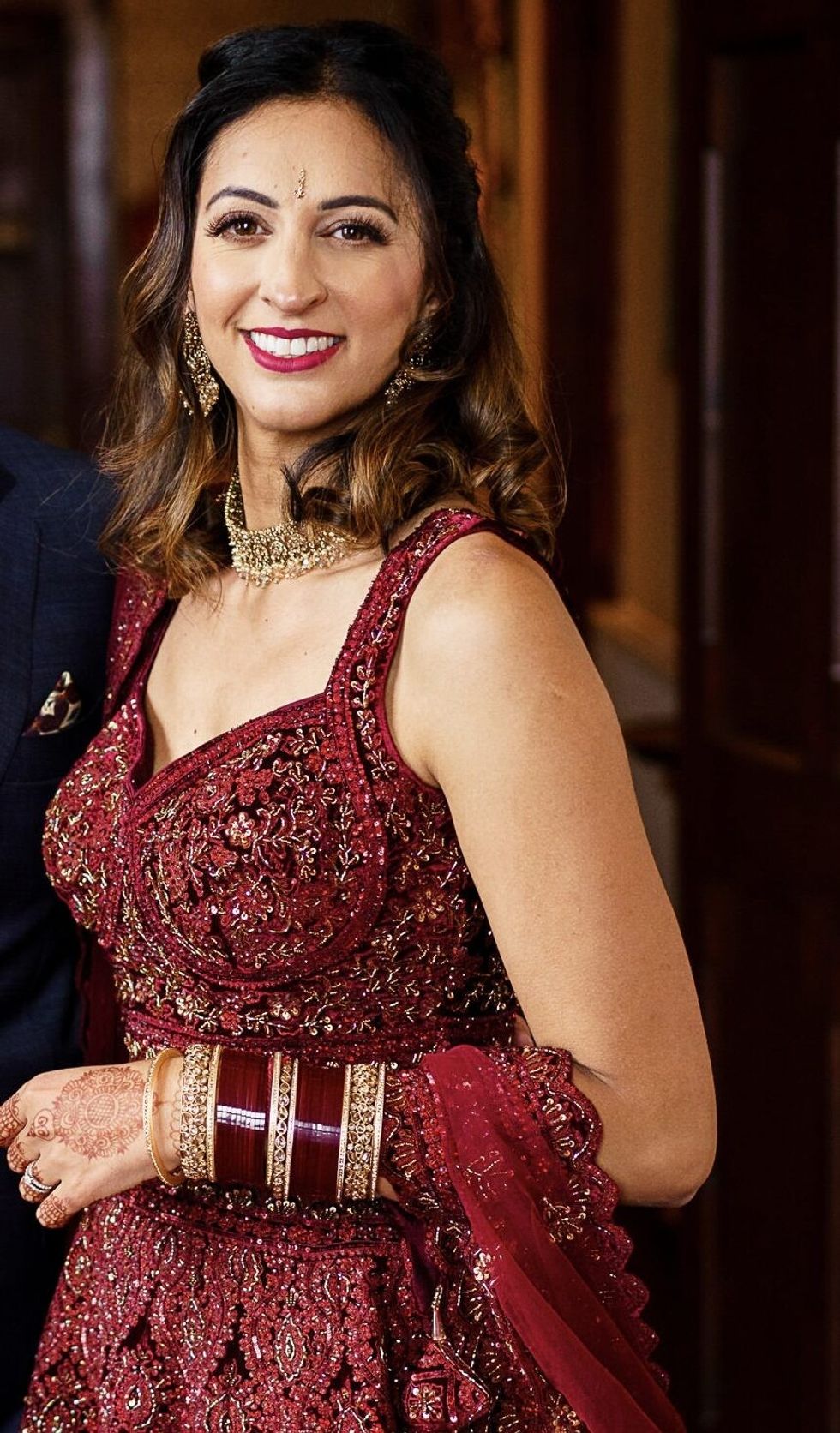HARPREET KAUR “PREET” CHANDI , or ‘Polar Preet’ as she is better known after her record-breaking trips to the South Pole, has talked to Eastern Eye about the adventure book she has written for children.
The Explorer’s Guide to Going Wild: Find Adventure Anywhere is suitable for Asian parents to browse with children aged seven or even younger, she said.
Her publishers point out that “Preet is a British physiotherapist and British army medical officer who is the first woman of colour to complete a solo expedition across Antarctica to the South Pole (ending January 2022). In January 2023, she broke the Guinness World Record for the longest ever solo and unsupported oneway polar ski expedition, travelling 922 miles across Antarctica in 70 days.”
Readers are told: “In this book, kids will learn how they can become a master explorer. Whether they want to learn how to camp in the wild, navigate their way through a new landscape, master bushcraft skills, or plan a polar expedition, this book will show them how to do it.

“Each chapter has a mini challenge for young explorers to try at home, from learning how to read the stars to building a den. All these skills will help children to push their boundaries, build a resilient explorer mindset, and get outdoors.
“Preet shares tales of her own expeditions, big and small, as well as practical things kids can do, to inspire her readers to try new things and have their own adventures (even on their doorsteps!)”
Chandi writes: “Throughout my life, I’ve encountered people who doubted me. They said I wasn’t smart enough for university, but I was, and I even got my master’s degree. They said I couldn’t join the army but I did, and I made a career out of it. Some people said I couldn’t do things because of my background and my gender. I’m British Indian. I was born in England and have family roots in India, and sometimes when people don’t know many people from your background, they put you in stereotypes.”
And in bold lettering, she explains to her young readers: “Stereotypes are when people mistakenly believe something about a person or thing based on how they look from the outside.”
She also says: “You don’t always need to go far from home to have an amazing experience. One of my favourite adventures was in the UK when I took my niece, Simran, camping for the first time. Camping at my mum’s house was a perfect adventure for Simran because if we needed anything inside the house, it was easy to grab.”
Chandi has taken a career break from the army – she recently got married – and travels the country talking to children.
She laughed as she confided to Eastern Eye: “Yes, I am married now, all went well, very different from expedition planning is what I tell people.”
She was born in 1988, and grew up in Derby, only 60 miles from the Peak District. “And I had never been to the Peak District until, I think, probably adult age,” she confessed.
Venturing into the outdoors wasn’t the norm in the Asian community, she observed. “It was like, ‘Why are you doing that?’ Being outdoors is pushing your comfort zone in a different way. But if you’re doing this with kids, it becomes normal for them.”

Her book is dedicated “to my niece Simran, and nephews, Karanveer and Arjan.” She said: “The first time I took Simran camping, I remember she was four, and just in the back garden. It was such a big deal for everybody in the family. Simran loved it. If you’re doing these when you’re younger, it doesn’t become that much of a big deal when you’re older.”
There is an intrinsic modesty about Chandi. “I love talking to kids, young people,” she continued. “I knew I would write a book at some point but I didn’t think it would be like this. I thought I would talk about all of my adventures. And the thing I love about this book is it’s not all about me.
“Yes, it tells you about some of my adventures, but it’s more about what you can do to have your own adventures. And that came from the editor. It’s not just about my journey, I’ve done this, and I’ve done that. It’s important for me to be relatable and, okay, if I’ve done this, what does it mean for you? (As a child growing up in Derby) I didn’t know anything about this world at all. I didn’t know anything about the army when I joined (at the age of 17). I didn’t tell my parents when I joined. I knew nothing about Antarctica. So, for me, it’s saying, if I can do this, you can go and do anything.”
She also emphasised: “And, you know, no adventure is too small. You start small, and you build up, and it can just give you so much, even just for your mental health. There are people who just don’t want to have those conversations, or ignore it or put it under the carpet. The outdoors have been unbelievable for my mental health.”
Chandi talked of the response of the Asian community to her achievements. Even now, “there’s a mixture community wise, like some people are super supportive and some haven’t acknowledged that I’ve been anywhere and done anything.
“Sometimes they might go out into the outdoors and think, ‘oh, there’s not people that look like me’. And sometimes that’s difficult because you’re going out of probably a comfort zone, being around people who are in your community. Then you go outside and you think, there may not be people that are from the same background as you, or have anything in common with you.
“But, to be honest, now I see so many groups from different backgrounds, and it’s amazing seeing how many people get out to the outdoors. And one thing I love about the outdoors is the outdoors isn’t going to judge you. It doesn’t matter how slow you are.

“I was the person when I first started going off to a mountain, it was in the wrong clothing and the wrong footwear, and then I learnt. It’s really important not to be judgmental and to realise that everybody has come from a different start point, and that’s okay.”
She offered practical tips on why even Asian skins require sun cream, supplies such as food and water to pack in backpacks plus first aid kits, and why new boots should be worn in. For a meal break, her favourite is taking (dried) mango wrapped in a paratha. She can cook dal and sabji and, of course, paratha, she said.
Her book builds on basics: no adventure is too small; build your own shelter; embrace mistakes; why the best adventures are with friends; solo exploration; and night-time magic.
In the book, Chandi says: “The first time I went camping was with the army. I was 19 years old and I’ll never forget the mix of emotions I felt. There were so many things I was trying that I had never done before.”
With people getting lost on holiday in difficult terrain, Chandi’s chapter on “super survival skills” might be a useful one to read.
The Explorer’s Guide to Going Wild: Find Adventure Anywhere is published by Wren & Rook, an imprint of Hachette Children’s Group. £9.99.












